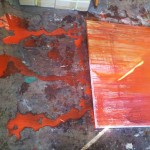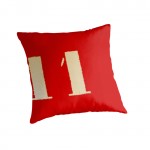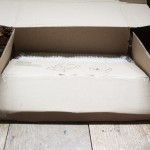Artist’s Wear Many Hats. Professional Arts Business.
Wouldn’t it be nice to get up everyday and just create and not have to worry about running an arts practice. Being an artist today means you are in business. You can’t survive on sales alone and have to create opportunities for yourself for those, who want to make a living from it.
According to the Australian Tax Office,“A professional arts business is a business you carry on as an author of an artistic work. This can be the artist, sculptor or photographer who created the work.”
Artists need to wear many hats: creator, promoter, product developer, maker, writer, photographer, record keeper, shipper, packer, marketer, customer service rep. and so much more.
There are no hard and fast rules, or right or wrong way, on how, to run an arts business. Just use your creativity, trust your own artistic impulses and have fun. A few of my tips . ( Not in any order)
Get plenty of rest.
Eat and sleep well.
Exercise daily. Walk, even if it’s only around your own garden.
Make an effort to create everyday, even if it’s only for 10 mins. I have bouts of creativity, every few days. They can last days, weeks, or months. When I am working to a deadline though, I just have to create and everything else needs to take second place.
I try to have enough work ready, for 2 exhibitions, just encase I’m asked to have a show, suddenly. (It has happened to me 2 times this year)
I have finally, learned, to say NO in my life and business. I am now, very selective in choosing, exhibitions and work I do. Once upon a time, I took on everything offered to me and suffered severe burnout.
Write down ideas and visuals in a small sketch book, journal. Keep it beside you everywhere. I make, or, bulk buy, sketch books when school sales are on.
Ask for help when you need it. Partners, family friends or professional help. Barter with your art if your unable to pay someone to help.
I find sitting at the computer in short bouts helps, as, I have back, neck and arm problems.
Tweaking my online websites, is a full time job, in itself. I get it done, in small bits, daily.
I check my emails when I get up in the morning. Any sales, or urgent things, I try to deal with straight away, otherwise, I worry all day and night and won’t get anything, done.
I make major lists of all the biggish, events, exhibitions, grant writing, gallery submission, residency applications, I want to apply for, over next 12 months. I then, cut down the jobs, I need to do into small steps, to achieve my goals. I recently found a good site for this Evernote I use the basic free plan.
1 or 2 days a week I photograph and document my artwork.
As soon as I make a sale, commission etc. I document it and keep a record of my customers, contact details and which artwork they bought.
A website is a must for every artist, as most galleries want to see an online portfolio, for submissions, including, awards and arts residency, jobs and courses you apply for.
Social media sites, all help you to get your art seen. Link up your website/blog post updates, to automatically post to your other social media sites.
A blog is like your own personal space to create in. I use mine, as an art journal, to share, ideas, work in progress and a bit about, who I am. As well, it’s a place to see and buy my artwork.
Make a video of your creative process. People are interested in what you do. Make sure to have your website details in the credits so they see more art at your website.
Take risks. Be resilient, flexible and find innovative ways to make money to fund your art.
Diversify with your art, without diluting it, so you can make a living. Doesn’t mean you are compromising yourself, or art. It’s just another, clever way, to get your art out there, make an income and continue your creative ideas.
Example: Limited edition art prints and quality home-wares etc. Teach from your studio, or create, online art courses. It all helps you make an income, so you can continue creating the art you want to do.
(I sold a selection of my art throw pillows and prints, which were curated, into an exhibition, at Federation Square, in Melbourne in, 2014) Helped fund, new art materials petrol and food.
Make an arts mailing list. First, ask people, if they want to be on it. ( suppliers, customers, friends, collectors, galleries, magazines, interior designers, architects, director’s, artists and all those who have shown an interest in your art etc.)
Have packaging ready and try to reuse and recycle packaging where possible for when the sales come in.
I also, buy custom made boxes for my artworks and rigid mailers, cello bags for smaller ones. Every couple of months I do a inventory of packaging, to see what I need to replenish.
Ship only a couple times a week so your not having to go out everyday.
Most of my art sales are overseas. To save money, I package them myself, weigh them and go to the Auspost website, to calculate domestic and international costs.
Most important! Take time out to do something different, or relax and do nothing.
I need to get out of the studio occasionally, to spend time with other artists, family and friends.
Spoil yourself, or someone else.
Have fun!
Back to “Free Tutorials”
Tags: artist jenny davis, artists in business, arts business, arts business, Arts marketing, Arts marketing, arts practice, Arts promotion, Arts promotion, arts resource, outlook8studio















